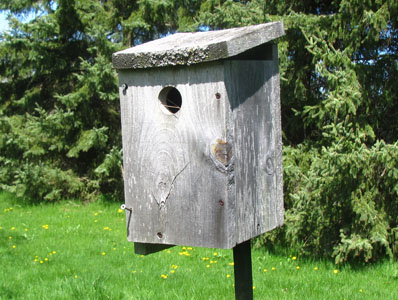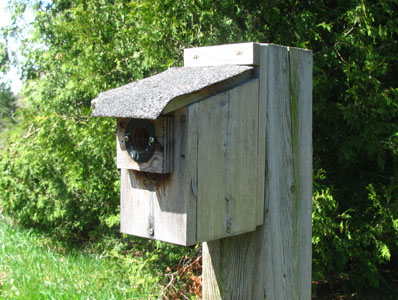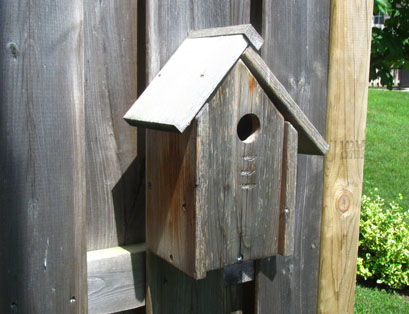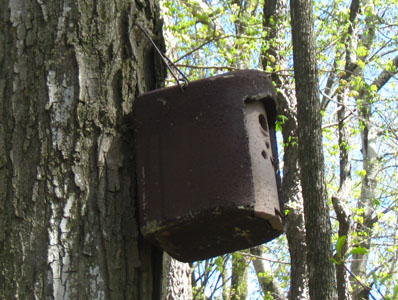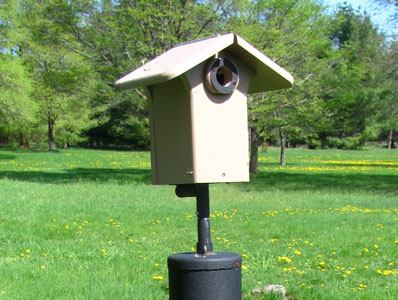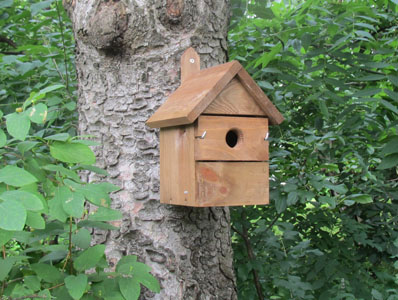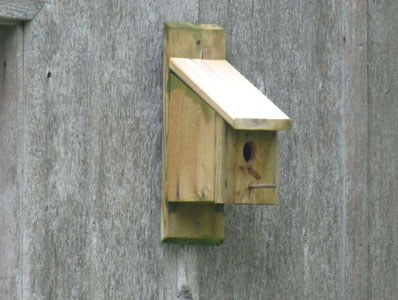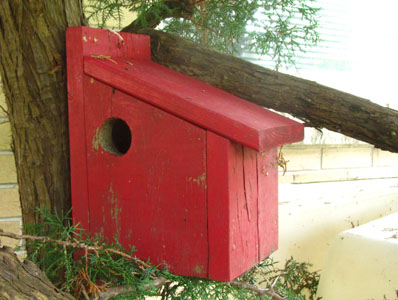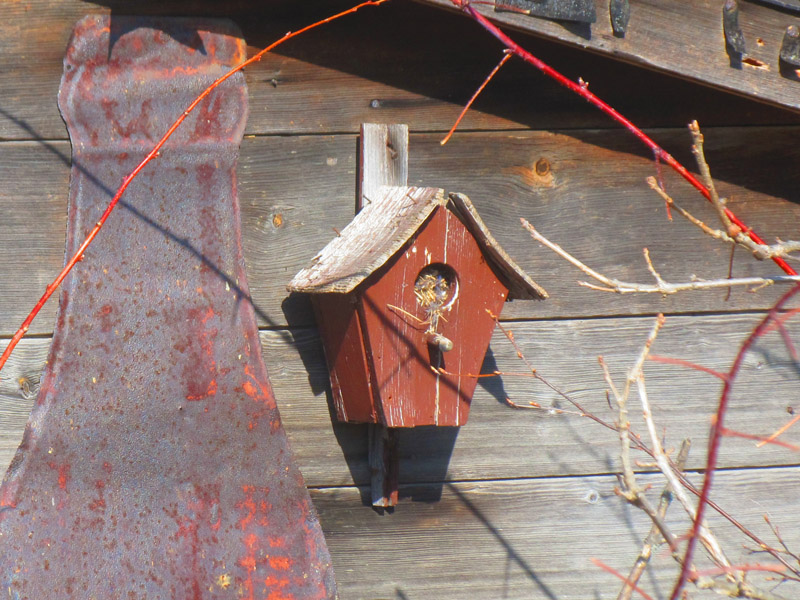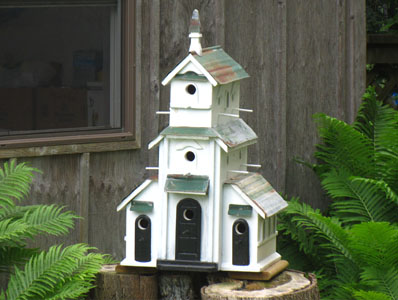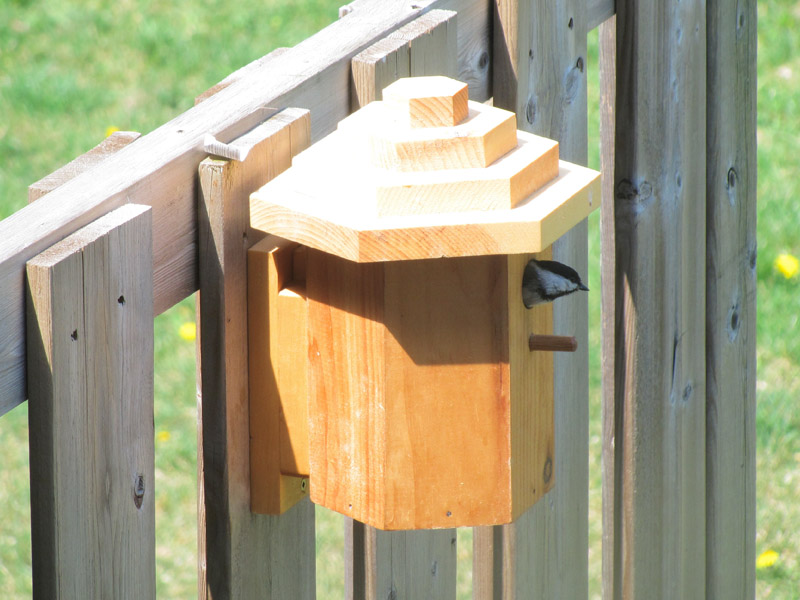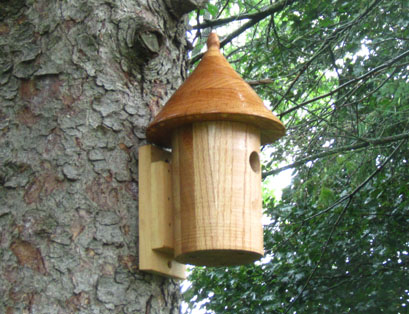 |  |
    
|

|
Highlighted below are the advantages and disadvantages to some of the many birdhouses available for smaller songbirds. When wrens are nesting, an adult house wren needs to collect over 30 grams/day (wet mass) of insects to maintain itself and its nestlings during peak nestling food demands. This is extremely valuable in a home garden environment where many insect pests are targeted by house wrens.
With this in mind, these birdhouses are compared based on how well they would work as a birdhouse for wrens and other smaller songbirds such as chickadees, titmice and nuthatches. |
Wooden Asphalt Roof |
||
|
Pros
|
|
Wooden Slanted Roof |
||
|
Pros
|
|
Concrete with Metal Roof |
||
|
Pros
|
|
Composite Bluebird |
||
|
Pros
|
|
Cedar |
||
|
Pros
|
|
Wooden Simple Box |
||
|
Pros
|
|
Wooden Asymmetrical |
||
|
Pros
|
|
Wooden Symmetrical |
||
|
Pros
|
|
Decorative Multi-compartment |
||
|
Pros
|
|
Birdhouse Feature Summary |
|
After researching many designs and reading many scientific journal articles it has become apparent that there are many flaws in current birdhouse models on the market for small songbirds such as chickadees and wrens. The aim is to provide birdhouses with as many favourable attributes as possible to give the birds a better chance, and make it easier for the care taker. The table below shows attributes to look for if a birdhouse for chickadees, nuthatches, titmice and wrens desired for. |
|
With these features in mind, we have come up with two birdhouse designs that addresses these strengths and limit these unfavourable weaknesses. Cranmer Earth Design hexagonal birdhouse and turned birdhouse (below) are functional, easy to maintain and are aesthetically pleasing. While many of the birdhouses on the market are said to be the perfect demensions for these birds, only these two designs have the solution to easy nest removal. |
Wooden Hexagonal |
||
|
Pros
|
|
Turned Hardwood |
||
|
Pros
|
|
 |  |
Sitemap | In Season | Products | Information | Store | Contact Us
